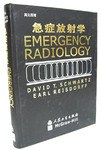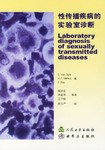

具體描述
Key concepts in the use of the radiorgraphy as a diagnostic tool for the emergency physician are presented in Chapters 1 and 2—Introduction to Emergency Radiology and Fundamentals of Skeletal Radiology. These chapters provide an introduction to the principles of radiographic analysis that are used throughout the book. Chapters 3 through 12 address the skeletal trdiology of the extremities and pelvis. Chapter 14 continues tieh a discussion of the thoracolumbar spine. Facial inaging is covered in Chapter 15. An introduction to cranial CT appears in chapter 16. Chapters 17 and 18 are devoted to pulmonary and cardiovascular radiography. Chapter 19 discusses abdominal radiography, including plain film interpretation and advanced imaging studies such as computed tomography, enteric contrast studies, and ultrasonography. The radiographic evaluation of the trauma victim is covered in Chpater 20. An introductory overview of emergency department ultrasonography is provided in Chapter 21. Pediatric considerations, including the developing skeleton, abdominal and respiratory tract emergencies, and the radiology of child abuse, are reviewed in Chapter 22. Chapter 23 addresses the role of radiology in the evaluation of the poisoned patient, a topic unique to emergency medicine. Finally, a discussion of quality improvement completes the text.
著者簡介
圖書目錄
讀後感
評分
評分
評分
評分
用戶評價
相關圖書
本站所有內容均為互聯網搜索引擎提供的公開搜索信息,本站不存儲任何數據與內容,任何內容與數據均與本站無關,如有需要請聯繫相關搜索引擎包括但不限於百度,google,bing,sogou 等
© 2025 book.quotespace.org All Rights Reserved. 小美書屋 版权所有




















